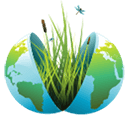
Sycan Marsh
About
GENERAL INFORMATION
Criteria:
- Listed on more than one “valuable wetland” list by natural resource agencies or nongovernment organizations.
- Protects biological diverse wetland flora, fauna and/or their habitat
- Supports significant numbers of wetland-dependent fauna, such as water birds or fish
Tens of thousands of waterfowl, waterbirds, and shorebirds of dozens of species utilize the marsh, particularly in spring and summer. Up to 10,000 Tundra Swans can be found at the marsh during their northward spring migration. More than 100 Greater Sandhill Cranes nest on the marsh, as do Black terns and Yellow Rails. Ducks breeding at Sycan Marsh include Cinnamon Teal, Blue-winged Teal, Northern Shoveler, Redhead, Canvasback, Ring-necked Duck, Common Merganser, and Wood Duck. The sedge-dominated marsh is also home to many raptors including Bald Eagle and Goshawk. - Audubon Society
The Nature Conservancy first acquired property at Sycan Marsh in 1980 and today owns over 30,000 acres. Its name comes from a Klamath Indian phrase meaning “level, grassy place.” Surrounded by pine forest in the headwaters of the Klamath Basin, a vast wetland provides habitat to unique and threatened freshwater species. The marsh awakens in early spring to 10,000 tundra swans migrating north along the Pacific Flyway. Many other birds follow, including breeding greater sandhill cranes, black terns, white-faced ibis and yellow rails. Bull trout and redband trout frequent the creeks into the marsh, and recently, new species of mollusks have been discovered. - The Nature Conservancy
Exemplary Ecosystem Services:
- Maintains ecological connectivity/cohesion
- Recreation (birdwatching, ecotourism)
- Aquifer recharge
CONSERVATION STATUS AND THREATS
Conservation status: Conservation Easement
Adjacent Land Use: Ranchland (pasture, grazing)
Approximate natural buffer width: > 100 ft
If Other: The Nature Conservancy owned preserve.
ECOLOGY
Approximate size: 12,140 ha (30,000 acres)
General wetland characterization: Inland Deep Fresh Marsh
Adjacent Water Bod(ies): Stream
Name of body of water: Sycan River
Surficial Geology:
Fault-block mountains enclosing basins with internal drainage, made up largely of Miocene and recent flows of basalt, pyroclastics, and alluvial sediments.
If Adjacent to Stream, insert stream order: 4th order
Soils:
Soil data unavailabe for this section of Fremont-Winema National Forest.
FLORA AND FAUNA
Dominant flora: Sedge (Carex sp.) dominant marsh
Unique flora: sundew (Drosera anglica),
Dominant fauna: wetland and wading birds, migratory waterfowl including species of secretive shorebirds (American bittern, pied-billed grebe, sora, yellow rail, Virginia rail). Others include Cinnamon Teal, Blue-winged Teal, Northern Shoveler, Redhead, Canvasback, Ring-necked Duck, Common Merganser, and Wood Duck
Rare fauna: tundra swan, sandhill crane, yellow rail, black tern, bull trout, redband trout
Images


